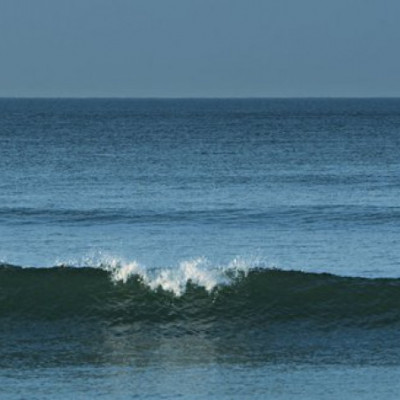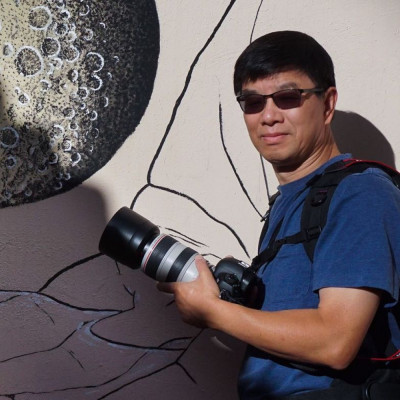SEARCH






|
|
|
|


By Editor Miro Susta
Edited and published by Yvette Depaepe, the 25th of May 2023
A beautiful effect is created when you move the camera along with the motif. We call it 'motion panning'. It adds dynamism to a photograph.
'Flying to the light' by Joan Zhang
In other words, the photographer wants to have the moving motif in focus and the rest of the scene blurred to convey the motion of the subject, to make speed visible in a photo.
'white horse' by Ummu Nisan Kandilcioglu
Photo motifs for motion panning can be found all around, flying birds, moving animals and people, rolling rail and road vehicles, even flying aircraft's, basically everything that is in motion.
'White swans taking off' by Katsu Uota
'2' by Vito Castrignano
'Great migration' by Giuseppe DAmico
'full trotting' by mihai ian nedelcu
'Panning Havana' by Andreas Bauer
'Racing in Motion' by Li Jian
'Rescue Me' by Piotr Wrobel
'Roundabout' by arminMarten
Motion panning technique is great to use when it is already too dark to freeze the movement. You can take photos with a relatively low ISO value because you must lengthen the exposure time to pull along anyway.
'KEIRIN' by Masatoshi Ujihara
'Lights chaser' by Hayk Shalunts
'Flying at sunset' by Sufang Wang
'Night moves' by Jason Crockett
Again, depending on the motif, motion panning shots can be successful with different exposure times.
The Sound of Speed by Lucas Gnarini
Lowrider by Leif Løndal
Dynamic trotting race by Erhard Batzdorf
For a racing car or racing motorbike at full speed, perhaps shutter speeds as fast as 1/125 sec are necessary: with a telephoto lens, such panning shots succeed even at faster shutter speeds.
Streamlined by Dan Thompson
High concentration by Rudra Sen
For a normal moving car or motorbike 1/60 sec, and for a cyclist or pedestrian at five to ten metres, 1/25 sec to 1/10 sec or even 0.5 sec are good starting values if you use an 18-55 mm wide-angle or normal lens.
Head to Head by Dan Thompson
Urban Cyclist (Amsterdam series) by luisfer
The further you are from the motif, the more difficult it becomes to the camera along.
Velodrome II by Masatoshi Ujihara
Sport is an ideal subject to practice motion panning technique, whether the subject is running on the road, on a racetrack or moving around a circuit.
Pokhara Marathon by Yvette Depaepe
'cycling track' by Gilbert Claes
'Revolution' by Masatoshi Ujihara
To make your motion panning successful, use the following approach:
* Stand so that you are looking slightly in the direction the motif is moving. This will give you a much more stable stance than if you were standing parallel to the moving motif.
* Since you want the moving motif to be in focus, you must focus on it.
* Find the right background because you need details that can blur. For example, if you wanted to do this technique with an airplane in the sky, it will not work because the blue sky will not blur. Lamps, city scenes, trees, anything that can blur will work.
* Activate the Servo Autofocus mode for motion panning, then the camera automatically and continuously adjusts the focus of a focused object as soon as it is in motion.
* Set the camera in Manual or Time Mode to the appropriate exposure time between approx. 1/125 and 0.5 s (rule of thumb).
* An approximate guideline for the exposure time is the reciprocal of the speed in km/h - for a car with a speed of 50 km/h this would be 1/50 second.
* Set the ISO is in Automatic Mode. Thus, the ISO takes over the fine correction over the entire panning range.
* Press the shutter button all the way down without releasing it.
* Follow the motif with the camera until it is in the optimal position.
* Release the shutter and continue to follow the motif in motion so that there is no abrupt jerk.
* It is advisable to use a Polarising or Grey Filter for slow shutter speeds and a mono- or tripod for better stability.
'Chasing' by Shi & Wei
Do not give up! The technique of motion panning requires a lot of practice. But success brings a lot of excitement and fun.
'Flamboyant' by Annie Poreider
I wish you much pleasure and satisfactory results in your own motion panning actions, and I would be happy to see your best photos in our 1x photo gallery.
www.mrsphoto.net
[email protected]
 | Write |
 | Ummu Nisan Kandilcioglu PRO
Thank you very much Yvette and Miro for a very valuable collection of information and photographs. I watched it with pleasure, Regards.
|
 | Miro Susta CREW Thank you very much for your lovely words of appreciation dear Ummu Nisan. |
 | Rudra Sen PRO Very nice and informative read! |
 | Miro Susta CREW Many thanks, Rudra |
 | Eduardo Blanco García PRO Muchas gracias |
 | Miro Susta CREW Eres muy bienvenido, Eduardo |
 | Kenneth Zeng PRO Thank you very much Yvette and Miro for the exceptional collections. |
 | Yvette Depaepe CREW Thanks for your appreciation, Kenneth! |
 | Erhard Batzdorf PRO Very, very inspiring, creative and powerful works. Thank you very much Yvette and Miro. |
 | Yvette Depaepe CREW Thank you, Erhard! |